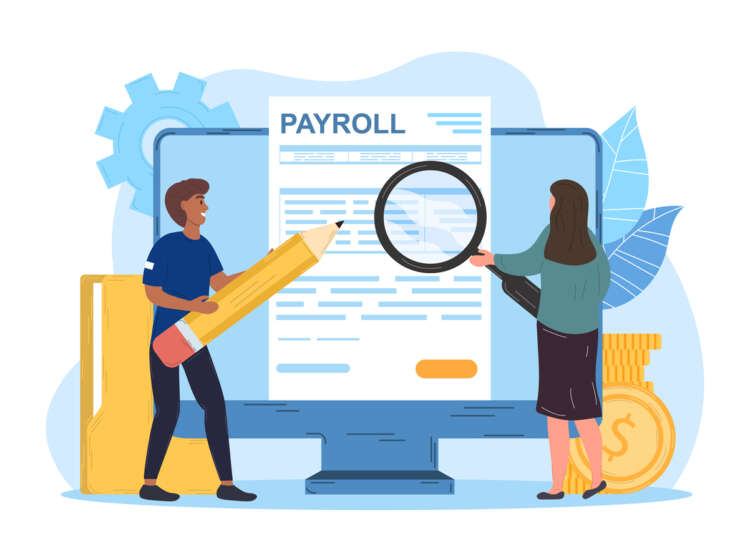Technology
Modernising payroll tech: why traditional technology is outdated


The banking and financial services arenas have already faced a wealth of digitalisation. Online banking has drastically changed consumer habits, with the ability to quickly and easily make transactions through apps and online platforms changing how we all manage our finances and cash flow. And of course, the pandemic only increased the use of digitally enabled financial processes as in-person exchanges became limited during lockdowns.
The ever-growing demand for new and improved financial technology is evidenced by the expansion of the fintech field. According to an analysis by global market research firm, Allied Market Research, the global financial technology market was valued at $110.57 billion in 2020, and is projected to reach $698.48 billion by 2030, growing at a CAGR of 20.3% from 2021 to 2030.
Today’s lack of digitization in payroll and payments
Technology in payroll processing has not kept pace with the digital transformation in other industry sectors. Migration to the cloud has been slow despite the revolution in software and tech capabilities. The same applies to how payroll payments are made. Treasury functions are still reliant on legacy infrastructure and the complex banking system, with very little digitization in the way transactions are made and employees receive their wages.
On the other hand, the digitization of consumer financial services has advanced rapidly, with online electronic payments and mobile payment apps now common place as new and improved smart phones and online security software come to market. There has been a growing use of digital or mobile wallets where financial accounts and information are stored, accessed, or used via software rather than a physical wallet, which has altered payment processes and mindsets. But these innovations are few and far between in the payroll payments world.
Employees and consumer expectations
Employees are consumers that today can instantly access almost anything through an app – from sorting lunch via Deliveroo and same day deliveries through Amazon, to instant money transfers via banking apps. In an era where this mindset of instantaneous results is the norm, individuals are asking why they should wait to access wages they’ve already earnt. Why should they wait for payday to get paid for the work they’ve done?
We also have to consider how the world of work itself has changed. The pandemic has led to a general consensus that it’s ok to question norms in society, which includes how and where we work. Mass remote working wasn’t commonplace before the pandemic, but now the benefits that businesses and employees have experienced have resulted in new ways of working. The same can be said for how people get paid.
The growth of pay on-demand
So as employees begin to question how and when they get paid, and businesses seek to update legacy systems and processes, digital payment capabilities for employee pay are emerging. It’s now possible to allow employees to effectively choose their own payday (or paydays) with on-demand access to earned wages via a mobile app. Progressive employers are offering this pay on-demand facility as a low-cost, high-value benefit to employees, giving them control and flexibility over how and when they receive their salary.
Banking rails or card rails for paying salaries
We’re also seeing an appetite for instant payment methods to avoid the typical three days allocated for payments via traditional banking rails such as SEPA, ACH, BACS, Swift, Wire.
In fact, we’ve been working with Visa to develop and deliver fast digital pay options that are, quite simply, more efficient and more suitable for the modern world. The new digital payment method that has been developed makes possible salary payments direct to employees’ debit or credit cards using Visa Direct, Visa’s real-time push payment platform. Visa Direct leverages the payment provider’s powerful, global network to facilitate fast digital payments worldwide, with state-of-the-art security and compliance controls.
After completing a customer’s payroll calculations, CloudPay can now make salary payments in seconds rather than days. Pay-to-card transactions are made via Visa Direct to any supported 16-digit debit or credit card number (PAN). Employees can still receive salary payments as usual in their bank accounts, but payments can be made 24/7 (with no banking hours limitations) and arrive faster via Visa Direct’s single network rather than traversing multiple systems across the banking networks.
How to modernise payroll processes
The challenge with the modernisation of payroll processes, though, is the need to stay ahead of the latest tech and software developments. For payroll teams, there is a common belief that new digital integrations will take time to manage and a change in processes will create more of an administrative burden or expose firms to new risks. But that’s not the case.
Sophisticated technology is playing a role in making tedious or labour-intensive processes quicker and easier in our everyday lives, and it can have the same impact for payroll. The likes of pay on-demand may appear on the surface to be complex to manage, but can in fact streamline processes. When we think back to when online payments were first introduced, there were understandable concerns around the change – but very few of us today could imagine life without mobile banking, and the ease and speed it brings to making and receiving payments. Why should how we manage payroll, and pay salaries be any different?

-
Business3 days ago
docStribute appoints ex-Group CIO of Newcastle Building Society as Non-Executive Director
-
Technology3 days ago
How to Use AI to Optimize Customer Relationships
-
Business3 days ago
What Every Small Nonprofit Needs to Know About Form 990-N
-
Finance3 days ago
stc Bahrain and Aleph Zero Partner to Advance Blockchain DePIN Across the Gulf Region







